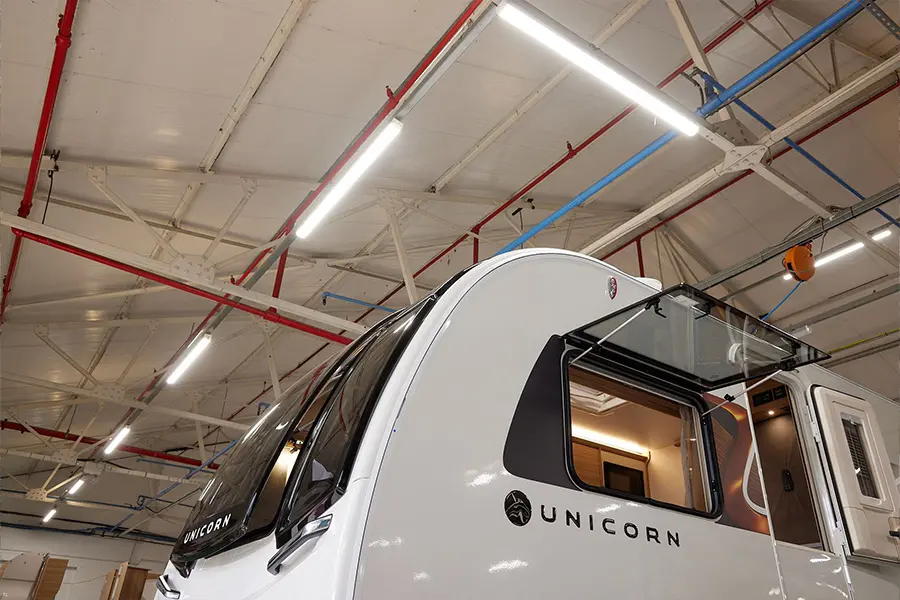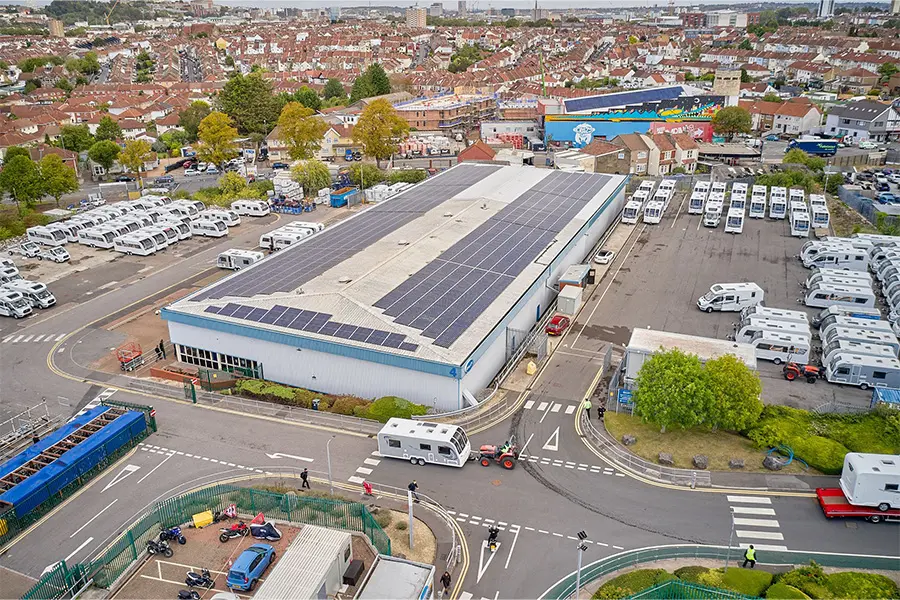Bailey of Bristol installs new LED lighting system as part of company-wide energy efficiency programme

This new investment is part of a company-wide programme targeting the reduction in overall power consumption across all of Bailey’s three sites. As well as the obvious environmental benefits of lowering energy usage there are also clear economic advantages to be gained in the face of spiraling fuel costs. The total cost of this exercise was over £40k, but as the new LED fittings use 70% less energy than the previous lighting system the installation costs will be recouped in just over one year.
In addition to introducing measures to reduce energy consumption Bailey is also looking to increase the amount it generates itself, by increasing its existing solar power provision over the next twelve months. At present Bailey has one solar panel array in situ at South Liberty Lane (installed in 2015) on the building currently housing its Product Development Centre. Consisting of over nine hundred individual panels which collectively are capable of generating over two hundred kilowatts of energy by harnessing the power of the South Bristol sunshine.
This move follows the recent announcement that Bailey of Bristol will be switching to a 100% fully renewable energy supply from October 2022 onwards as part of its on-going commitment to reduce the carbon footprint of its operations.
In future Bailey will specify a wind, hydro and solar power mix for all three of its sites which, whilst more costly than the energy from fossil fuels, does not create any carbon emissions at the point of generation and is also naturally replenishing. The company believes that transferring to renewables is simply the right step to take and in future will allow Bailey to report its electricity consumption (Scope 2) as zero carbon, under the Greenhouse Gas (GHG) protocol*.
Bailey of Bristol’s aim in future is to be become a carbon neutral business and these two initiatives are the latest in a number of changes that the company has made on that journey.
Managing Director Nick Howard commented “The introduction of our new internal energy conservation programme is the next important step in helping us achieve our sustainability and social responsibility goals.”
“As well practical changes such as the recent installation of new LED lighting systems we are also looking to better educate our team on how reduce our overall energy consumption as part of the positive action we want to take to help safeguard the environment for the future.” he added.
*The Greenhouse Gas (GHG) protocol is a set of internationally accepted standards of measuring and reporting emissions. The guidance categorizes emissions activities into different scopes for accounting and reporting purposes.
The GHG Protocol has defined three scopes of emissions which are essentially who ‘owns’ those emissions and how much control a company has to change or influence them:
- Scope 1 covers direct emissions from owned or controlled sources, like the gas used to heat a building or the fuel used in the company’s fleet of vehicles.
- Scope 2 covers indirect emissions from the generation of purchased electricity, steam, heating and cooling consumed by the company.
- Scope 3 includes all other indirect emissions that occur in a company’s value chain, like the emissions from commuting to work, or purchased goods and services.

Latest news & events
See all news & eventsChipping Sodbury Spring Sales Event
BADMINTON ROAD, CHIPPING SODBURY, BRISTOL
West Country Motorhomes Open Weekend
BRISTOL ROAD, BRENT KNOLL, HIGHBRIDGE, SOMERSET
Swindon, Oxford and Reading Caravan and Motorhome Centre Easter Sales Event
GREATFIELD, ROYAL WOOTTON BASSETT, WILTSHIRE
Grantham's Midlands Caravan & Motorhome Season Ready Show
SPITTLEGATE LEVEL
GRANTHAM

